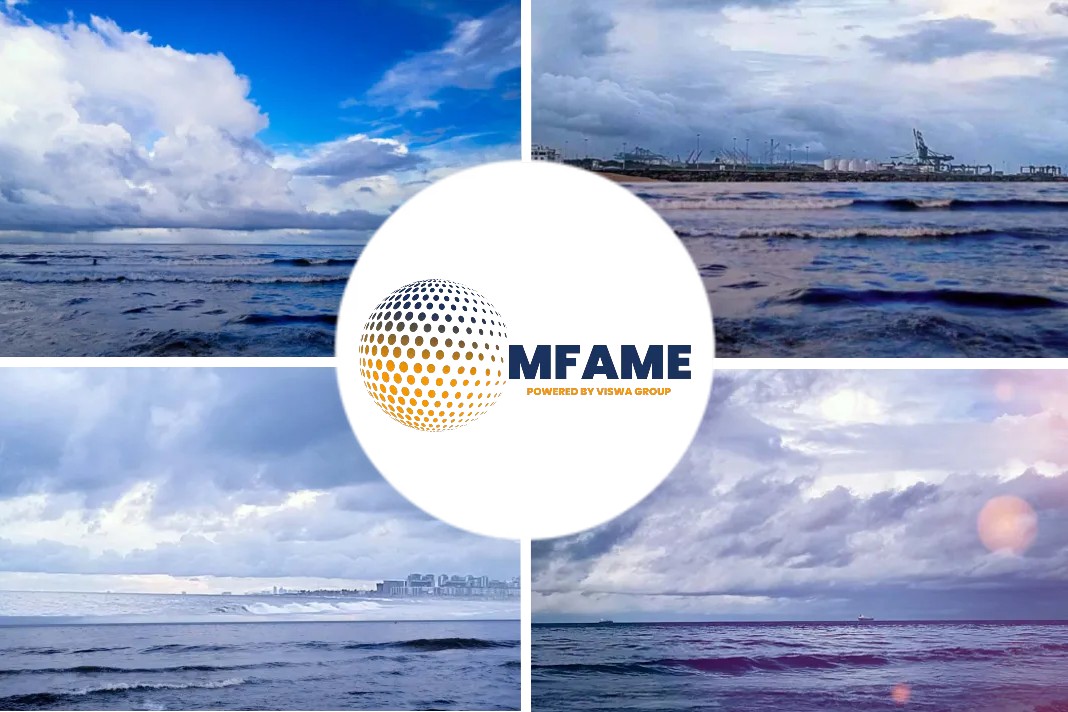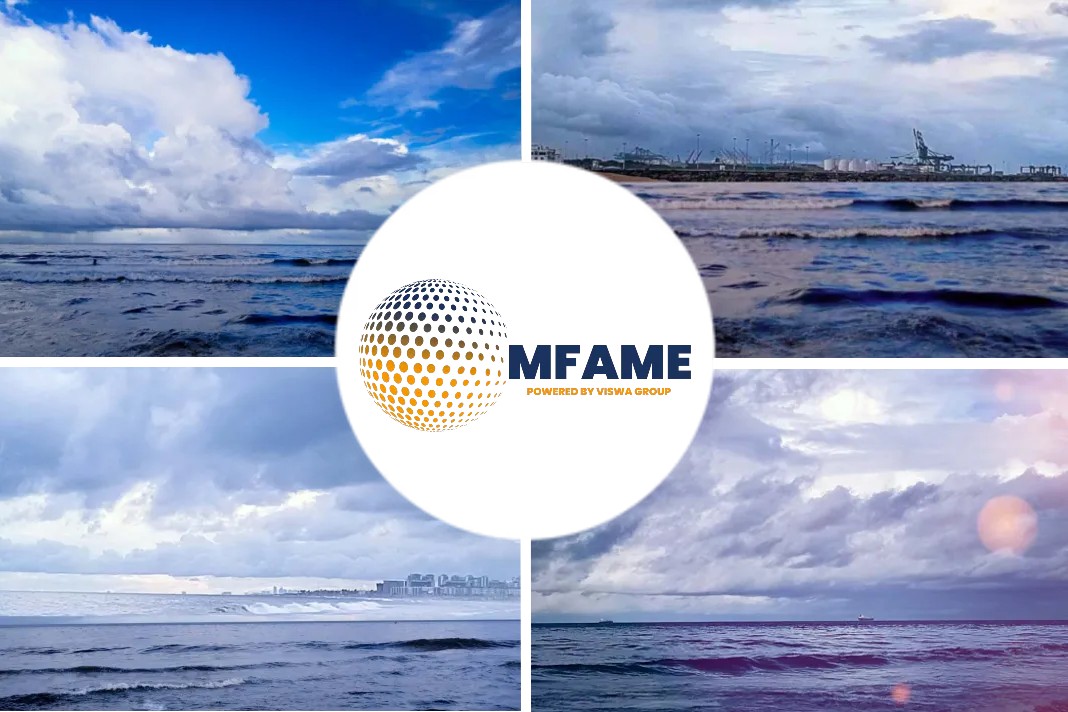- The trans-Pacific eastbound market is in the thick of a record-setting bull run.
- The California port system is buckling, with delays tying up even more containers and making the equipment shortfall even worse.
- Imports appear set to remain at peak levels at least through this month, and probably into Q1 2021, due to holiday cargoes and inventory restocking.
- But shippers can’t get all their cargo to the U.S. if liners don’t have not enough empty boxes in China.
Greg Miller writes for Freight Waves about how the containers are ‘the new gold’ amid ‘black swan’ box squeeze. It also reveals how trans-pacific eastbound cargo could be capped by container capacity limits.
“It seems like containers are the new gold these days,” marveled Nerijus Poskus, global head of ocean freight at Flexport.
“Container availability in Asia is extremely limited right now,” added Flexport Head of North American Ocean Freight Jan Hinz during a company webinar on Tuesday. “It’s causing a lot of hardship for our customers and the shipping industry as a whole.
“We have heard anecdotal reports out of Asia that some ships are sailing with open slots simply because there is no equipment — even though there’s demand to fill the containers,” said Hinz.
Flexport’s warnings mirror last week’s headline-grabbing comments from Nico Hecker, director of global container logistics at Hapag-Lloyd.
Black swan
“We are currently seeing a ‘black swan’ and are experiencing the strongest increase in 40-foot [container] demand following one of the strongest decreases in demand ever,” Hecker said. “Almost three out of four containers in our 40-foot fleet are currently deployed … and therefore not available.”
What’s driving the container crunch?
“It’s not really a shortage. It’s more that the containers are out of position,” Ocean Audit founder Steve Ferreira told FreightWaves.
Because of strong growth in places like Africa and South America — the more minor trades — the containers are out of position.
They have to go on another leg, to a neutral place like the U.S., where they are gathered up and sent back over to Asia.
CEO of SeaIntelligence Consulting
Lars Jensen, CEO of SeaIntelligence Consulting, told FreightWaves, “It’s a confluence of two events. One clearly being the sharp uptick in demand growth. The other is the time-delayed effect of the many blank [canceled] sailings a few months ago. The blank sailings led to severe disruption in the normal repatriation flow of empty containers. The impact of that is being felt at the same time as demand has heated up.”
According to Peter Friedmann, executive director of the Agriculture Transportation
- Coalition, Ocean carriers offer the major importers into the U.S. virtually unlimited free time. While U.S.
- exporters typically get three to five days of free time, the so-called ‘champion’ accounts — the big-box importers — are keeping their containers, without detention penalty, for weeks on end.
- Many of the containers are not open and emptied. They’re being used for storage,” said Friedmann.
He maintained that this practice is a “significant contributor” to the today’s box-capacity squeeze.
Finding more containers
A Maersk spokesman told FreightWaves, “We have leased all the equipment we could find in the market during July-October. But the leasing market has now dried up. There are no more containers available in the market.”
Meanwhile, box manufacturers are maxed out for at least the next four and a half months. Normally, it might take six to eight weeks from contract to delivery. Not so today. Factories are sold out through Q1 2021 and even into Q2 2020.
On the latest conference call of box-equipment lessor CAI International (NYSE: CAI), CEO Tim Page said “the factories aren’t really quoting [price offers]. All of the factories are not quoting for much of the second-quarter deliveries. It’s hard to order when you can’t get a quote.”
Regarding previously ordered new boxes, Page said, “customers today are basically waiting for the paint to dry to pick them up.”
Competition between trade lanes
For cargo shippers, it doesn’t matter whether there are not enough boxes because they haven’t been built yet or because they’re in South American when they need to be in China.
For carriers, container availability is a zero-sum game. It can make sense for them to deploy more scarce resources in trade lanes where they reap the highest returns.
One example of switching scarce container capacity among trade lanes involves Hapag-Lloyd.
U.S. agricultural groups have criticized the carrier since last month for opting to transport boxes empty from the America to Asia instead of loading export goods.
Critics allege the carrier is doing so because it can make more money if it gets the empties to China quicker and restuffs them with high-paying exports to the U.S.
Agricultural exporters in the U.S.
A Hapag-Lloyd spokesperson told FreightWaves on Wednesday, “We continue to serve the agricultural exporters in the U.S. Due to some significant supply chain bottlenecks … we have temporarily reduced our export volume.”
This is primarily impacting business that consumes excessive container days at origin and destination, but is not limited to agricultural products.
We are taking measures to overcome these constraints but expect that the challenges will persist for some months.
Changing equation for carriers
This week, Alphaliner highlighted the huge shifts in carrier income — measured in cents per nautical mile per forty-foot equivalent unit (NM-FEU) — among the top trade lanes over the past two months.
As of Sept. 4, carriers earned 64 cents per NM-FEU on the Shanghai-Los Angeles, making it the biggest money-earner among the largest trades at that time. As of last Friday, carriers earned 66.5 cents per NM-FEU, up 3% since Sept. 4.
In contrast, Shanghai-Melbourne, Australia, jumped to 86.5 cents per NM-FEU as of last Friday, up 79%, putting it in the top spot. In second place, Shanghai-Santos, Brazil, rose to 75 cents per NM-FEU (+83% versus Sept. 4) and Shanghai-Lagos, Nigeria, was at 70 cents (+21%). Shanghai-Los Angeles is now in fourth place.
According to Hinz of Flexport, “It’s a global competition for equipment. Like a global bidding war for equipment. The U.S. had been the best-paying trade a couple of months ago. And now it’s more or less in the middle. That will drive decisions on where to allocate equipment.”
Limitations on carriers
There are several caveats, however. First, if a carrier opts to earn more by taking advantage of Shanghai-Santos rates and switches that container from Shanghai-Los Angeles, it’s harder to get that container back to Shanghai from Santos than from Los Angeles.
“Even if you have higher profit per nautical mile, the question is how quickly you can get the empty box back to Asia again. This would favor a trade with a fast round trip over a longer trade,” explained Jensen.
In addition, contract-customer requirements constrain carrier-equipment allocations. It’s not necessarily a higher rate per NM-FEU that moves containers between lanes. As Ferreira put it, “If Goodyear imports tires from Thailand to the U.S., they’re also sending tires from Thailand to Melbourne and Santos.”
As for carriers pulling container equipment from Asia-U.S. and shifting it to more lucrative trades, Ferreira responded, “I think they have to [keep them in Asia-U.S.] for commercial purposes, even if they’d love the boxes in another locale.”
What’s next?
If there are not enough 40-foot high-cube containers to service U.S. imports, there are other options.
According to Hapag-Lloyd, “40-foot reefer containers that have been switched off — so-called non-operating reefers — are [being] filled with dry goods like textiles, shoes and electronics.” The carrier predicted that “20-foot and 45-foot containers will likely be the next types offered as substitutes for 40-foot containers.”
“From an availability perspective, it’s all about [40-foot] high cubes,” said Hinz. “So, we are asking our clients to be flexible. If there are no high cubes, use the [standard] 40-foot container. Or a 20-foot container. Look at non-operating reefers. Or even increase frequency and start to ship LCL [less than container load] to keep going and not build up a backlog.”
Looking forward, Hinz advised, “As we head into the RFQ [request for quotation] season next year, expect to see a major role in contract negotiations around equipment guarantees, pressure on free time and high interest among ocean carriers in trade lanes with high equipment turnaround times.”
Did you subscribe to our daily newsletter?
It’s Free! Click here to Subscribe!
Source: Freight Waves























